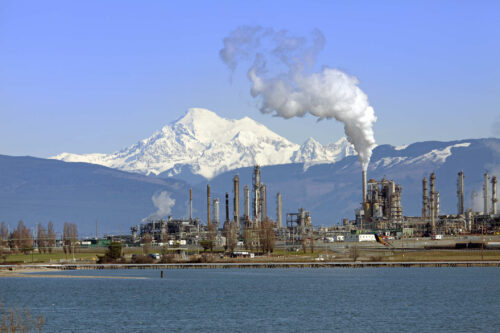
Opportunities for Industrial Modernization in Washington
Technical Pathways, Investments, Policy, and Decarbonizing Options for Emission-Intensive, Trade-Exposed Industries
Washington’s Cap-and-Invest program is a popular and powerful tool for meeting the state’s greenhouse gas targets and funding investments that support Washington’s businesses and residents. But how the program considers industrial emissions beyond 2034 will have to be revisited by Washington’s legislative and regulatory bodies in order for the program to function efficiently and equitably in the long term.
RMI has performed a technical pathways analysis for each of Washington’s “Emission-Intensive, Trade-Exposed” (EITE) industrial sectors, which produce paper, food, beverages, steel, aluminum, glass, cement, building materials, airplanes, semiconductors, fertilizer, and transportation fuels. We found that existing and near-term technologies could reduce emissions from EITEs 39% by the end of 2034, largely through implementing energy and material efficiency measures and electrifying applications.
The results of the technical pathways analysis suggest enough industrial emissions can be reduced by the end of 2034 and by 2050 to justify updating the Cap-and-Invest program with sectoral benchmarking and new no-cost allowance reduction schedules post-2034. These updates would ensure the program continues to function efficiently and equitably, and meets long-term decarbonization targets.
To help EITEs decarbonize and ensure the Cap-and-Invest program meets its objectives, we also detail 18 new policy recommendations pertaining to Washington’s industrial sector. We categorize these ideas as “Updating Standards and Regulations,” “Cap-and-Invest Program Evolution and EITE Treatment,” or “State Support”; and prioritize the policies as either “Essential,” “Recommended,” or “Worth Consideration.”
Additional contributors: Joe Fallurin, Allie Jobe, Mia Reback, Kayleigh Rubin, Jane Sadler
Recommended Reading
How States Can Lead the Charge on Industrial Decarbonization
